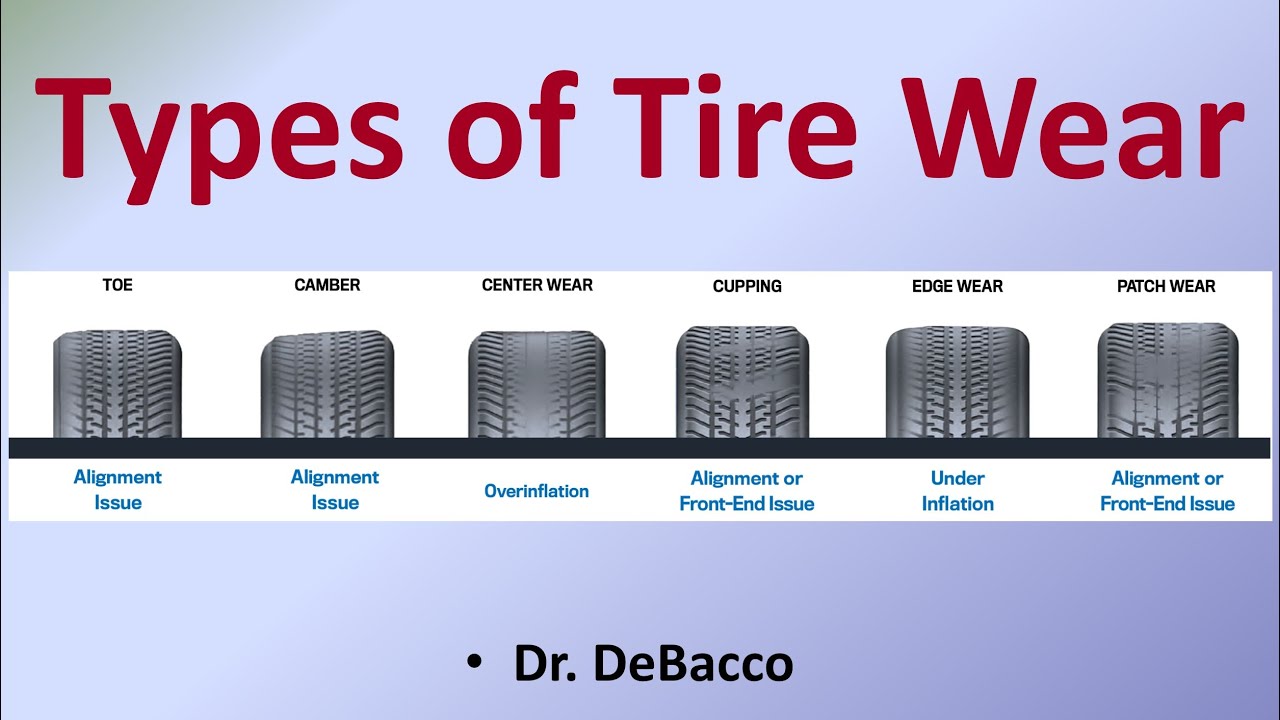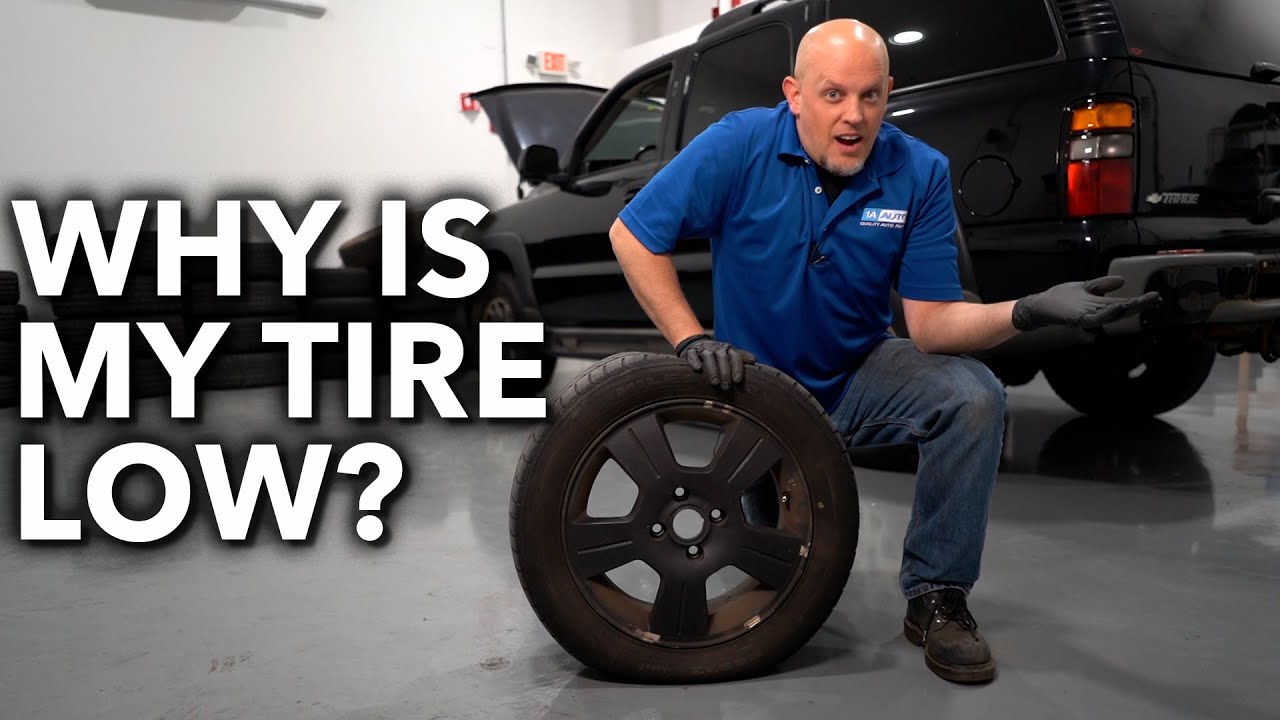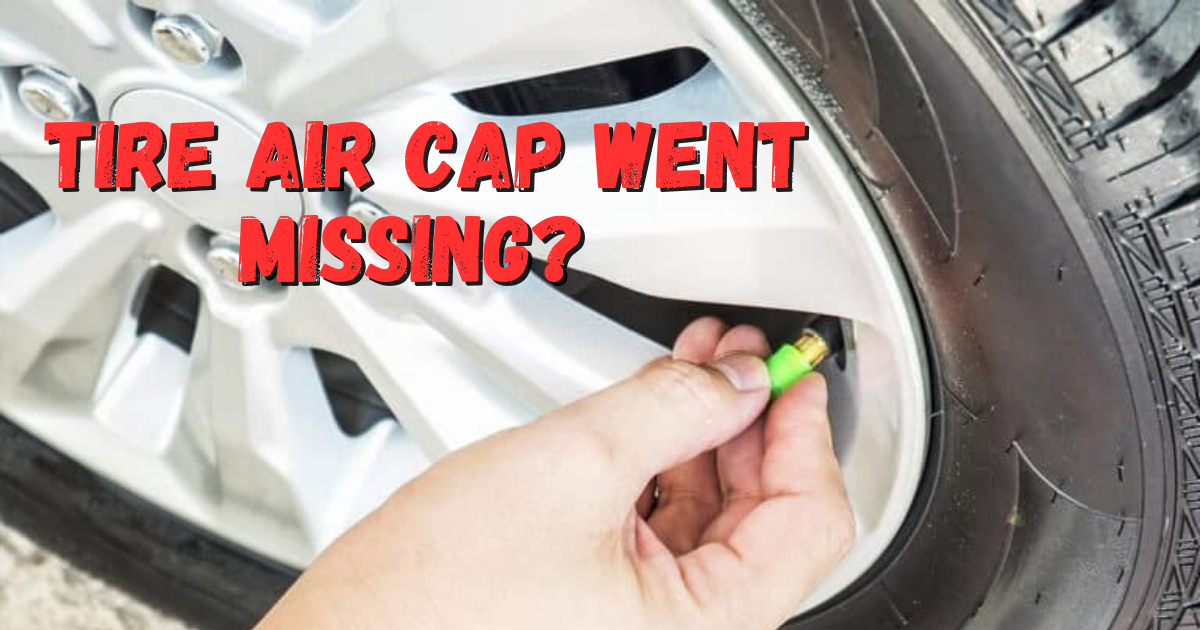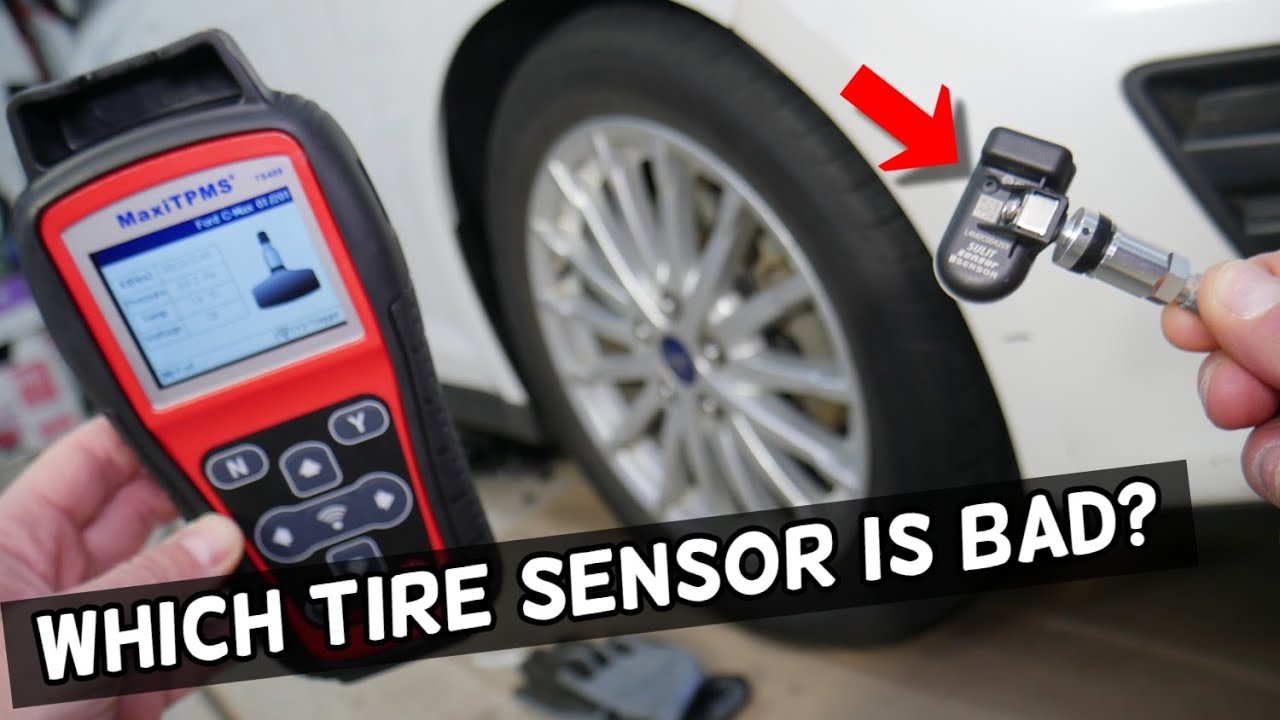It’s well known that as long as your tires are on your car, they’re getting damaged in ways that will make them less practical over time. So, they will need to be changed out at some point. But what’s less well known is that there are different ways tires wear down, and some of them can be slowed down with the right maintenance. Here are some of the ways tires wear down and the right practices you can do to slow it down.
Good tire means safe driving.
Imagine the tires on your automobile to be the foundation of the building.. Tire tread affects how your car drives, how comfortable it is to ride in, and most importantly, how safe it is to drive. Proper tire maintenance means keeping your tires at the right pressure, making sure they have enough tread, checking the air-level balance, and making sure the wheels are in the right place.
Also, the amount of wear on your tires can tell you a lot about the problems of your tires. Keeping this in mind, make sure to check your tires for wear on a regular basis to avoid long-term problems. Also, make sure to ask a professional how much wear is safe and then replace your tires when you need to. If you do need new tires, look on trusted websites like Tire Buyer to find out what kind of tire will work best for your car.
The tread on your tires can tell you a lot about how well they are holding up. If your tire wears out in the middle, on the edges, or on the outside, it needs to be fixed. By checking your tires often, you can spot any problems and find out if you need to get them fixed right away.
Here is a short guide to the Six most common types of tread wear that will help you figure out what your tires are telling you.
Center Wear

This is the most common and the fastest type of wear caused by everyday use. you probably have a tire that is too inflated. When tires are overinflated, they get a bump in the middle, which hits the road when you keep driving.
Causes
Tires overinflation is the main reason of center wear; when a tire has too much air in it, and the middle starts to stick out, center wear happens.
Causes
- Excessive inflation
- Wheels and tires that do not properly match each anothers
- The tires are not changed at the proper intervals.
Recommendation
- Keep your tires inflated to the pressure listed in your owner’s manual to prevent future center wear.
- Ensure that your rims are the correct size.
- Rotate the tires at the appropriate intervals before the center wear gets severe.
Side Wear (Shoulder Wear)
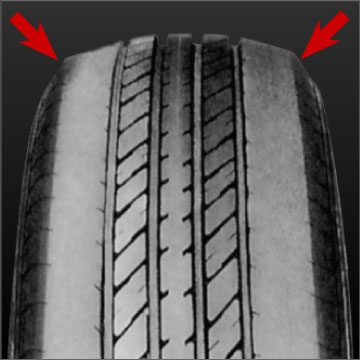
Side wear looks a lot like Center wear . But this type of damage is caused by tires that aren’t inflated enough, not by tires that are too full. If a tire doesn’t have enough air to keep its shape, the center of the tire caves in, and the edges of the tread make most of the contact with the road. This makes the tread look worn on both sides.
Causes
- Low inflation pressure and/or excess load
- Making a series of quick turns while travelling at a high speed when cornering
- Tires and rims that do not properly complement one another
- The tires are not rotated at the proper intervals.
Recommendation
- Maintain the proper air pressure in your tires at all times.
- Don’t drive roughly when you’re turning corners.
- Make sure you have the right rims and mount your tires correctly.
- Perform regular tire rotations so that shoulder wear doesn’t become an issue.
One side wear
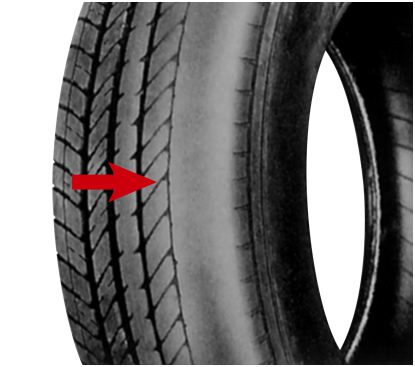
When the outer or inner part of a tire wears faster than the rest of the tire, that’s another sign that a car isn’t lined up right. Most of the time, a new alignment will solve the problem. But if it doesn’t, you should check the springs and ball joints.
Causes
- incorrect alignment of the wheels (especially faulty camber)
- Overload
- Extensive usage on high crown highways
Recommendation
- Ensure that the wheel alignment is set properly, But if it doesn’t, you should check the springs and ball joints.
- Rotate your tires at regular intervals to avoid uneven and dangerous wear.
- Avoid overloading
- Mount the tires in the opposite order.
Cupping Wear
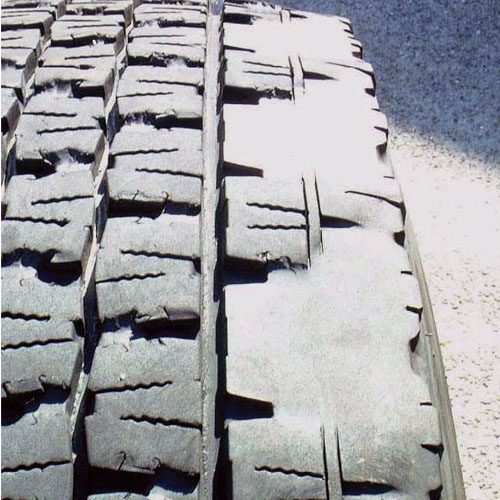
Causes
Cupping or scalloping is another important way to tell if a tire has worn down. With this kind of wear, you can usually see or feel the tire bouncing as you drive, which is why you often see cupping on trailer tires. A worn shock absorber or a bad suspension system can cause a car to cup.
recommendation
this is when the tread starts to get holes, and the tire starts to look lumpy. This wear is often caused by loose, worn, or bent parts of your suspension system. If left unchecked, this wear can be dangerous.
Feathering (feather edge wear)
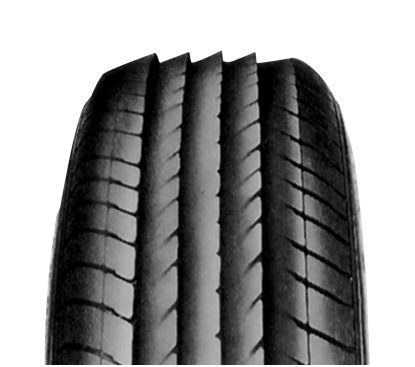
Feathering is hard to detect visually but easy to feel when you move your hand along the tread of your tire. Each tread feels smooth on one side and sharp on the other. Most feathering is caused by too much toe-in or toe-out, which can be fixed by having the wheels properly aligned. But feathering could also be a sign of driving too fast around corners, which is a form of aggressive driving.
Causes
- Incorrect alignment of the wheels, especially faulty toe-in
- A bent axle beam.
Recommendation
- Ensure that the wheel alignment is set properly.
- Make the necessary adjustments to fix the mechanical problems
Flat Spot Wear
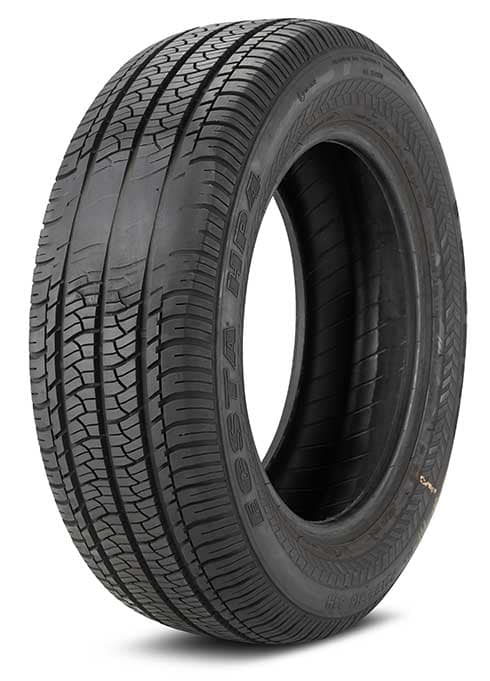
Flat spot wear is usually caused by hard or emergency braking, but it could also be a sign of a bigger problem with the brakes. If you see this kind of wear and you don’t remember stopping quickly or hard, you may have a problem with the brake system’s foundation.
Causes
- Faulty suspensions, rotating parts, and/or brake parts, such as axle beams, bearings, and brake shoes
- Tire and rim assembly is out of balance when it moves.
- Tire and rim assembly has too much run-out
- Sudden braking or rapid starting
Recommendation
- Don’t drive roughly
- Fix any broken mechanical parts, like the suspension, axle beams, bearings, and brake shoes.
- Reduce the runout of the tire and rim by matching the tire’s maximum runout point to the rim’s minimum runout point.
- Use a wheel balancer to fix the dynamic imbalance of the tire and rim.
Sidewall wear (Broken up cord)
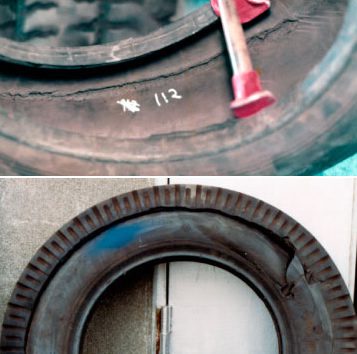
Most of the time, a driver who parks too close to the curb is to blame for sidewall wear. Also
Causes
Causes
Too much heat and fatigue are caused by air leaking out slowly because:
- Valve Cores that don’t match or core rubber
- Simple stuff, like mud or dust, in the valve
- Small hole in the tire and/or tube
- Rust or other small particles on the bead seat of the rim
- A puncture that wasn’t fixed well enough
Recommendation
- Don’t use the damaged tire.
- Use tires with the recommended load and air pressure and check the air pressure on a regular basis.
- Use a new and correct valve core
- Use a valve cap to keep small things from getting in.
- For new tires, use new tubes
- When mounting tires, remove any rust or small particles from the bead seat of the rims.
- Fix flat tires and/or tubes the right way.
Sidewall wear (Cut or shock)
This kind of wear is common in cities where people park on the street. When sidewall wear gets too bad, it can weaken the tire’s center and cause it to buckle.
Causes
- Bad warping or pinching between the object and the wheel or tire.
- Hard hit against an object.
Recommendation
- Watch out for obstacles and drive carefully. If you can’t avoid the obstacles, slow down.
- Check the tires often and remove any foreign objects from between the treads.

